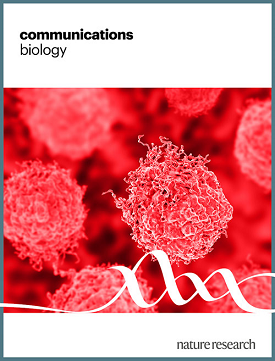水杨酸钠诱发听觉减退和焦虑样行为的丘脑-皮层神经机制
IF 5.2
1区 生物学
Q1 BIOLOGY
引用次数: 0
摘要
耳鸣被认为是导致焦虑的一个潜在因素。丘脑-皮层通路在听觉和情绪信息的传递中起着至关重要的作用,但它与耳鸣相关焦虑的偶然联系仍不清楚。在本研究中,我们探讨了经水杨酸钠(NaSal)处理的小鼠丘脑和皮层的神经活动。我们发现听觉皮层(AC)和前额叶皮层(PFC)的伽马带振荡(GBO)都有所增加,而且皮层 GBO 和丘脑神经活动之间存在相位锁定。这些变化可归因于丘脑网状核(TRN)中GABA能神经元活动的抑制,而光遗传激活TRN可减少NaSal诱导的听觉亢进和焦虑样行为。TRN中内源性大麻素(eCB)/大麻素受体1(CB1R)传导的升高导致了NaSal诱导的异常。我们的研究结果突显了 TRN 在听觉和丘脑边缘-皮层通路中的调节作用。水杨酸钠增强了内源性大麻素信号传导,降低了丘脑网状核的GABA能活动。这增加了听觉皮层和前额叶皮层的伽马振荡,导致听觉亢进和焦虑样行为。本文章由计算机程序翻译,如有差异,请以英文原文为准。
Thalamo-cortical neural mechanism of sodium salicylate-induced hyperacusis and anxiety-like behaviors
Tinnitus has been identified as a potential contributor to anxiety. Thalamo-cortical pathway plays a crucial role in the transmission of auditory and emotional information, but its casual link to tinnitus-associated anxiety remains unclear. In this study, we explore the neural activities in the thalamus and cortex of the sodium salicylate (NaSal)-treated mice, which exhibit both hyperacusis and anxiety-like behaviors. We find an increase in gamma band oscillations (GBO) in both auditory cortex (AC) and prefrontal cortex (PFC), as well as phase-locking between cortical GBO and thalamic neural activity. These changes are attributable to a suppression of GABAergic neuron activity in thalamic reticular nucleus (TRN), and optogenetic activation of TRN reduces NaSal-induced hyperacusis and anxiety-like behaviors. The elevation of endocannabinoid (eCB)/ cannabinoid receptor 1 (CB1R) transmission in TRN contributes to the NaSal-induced abnormalities. Our results highlight the regulative role of TRN in the auditory and limbic thalamic-cortical pathways. Sodium salicylate enhances endocannabinoid signaling, reducing GABAergic activity in the thalamic reticular nucleus. This increases gamma oscillations in the auditory cortex and prefrontal cortex, causing hyperacusis and anxiety-like behaviors.
求助全文
通过发布文献求助,成功后即可免费获取论文全文。
去求助
来源期刊

Communications Biology
Medicine-Medicine (miscellaneous)
CiteScore
8.60
自引率
1.70%
发文量
1233
审稿时长
13 weeks
期刊介绍:
Communications Biology is an open access journal from Nature Research publishing high-quality research, reviews and commentary in all areas of the biological sciences. Research papers published by the journal represent significant advances bringing new biological insight to a specialized area of research.
 求助内容:
求助内容: 应助结果提醒方式:
应助结果提醒方式:


